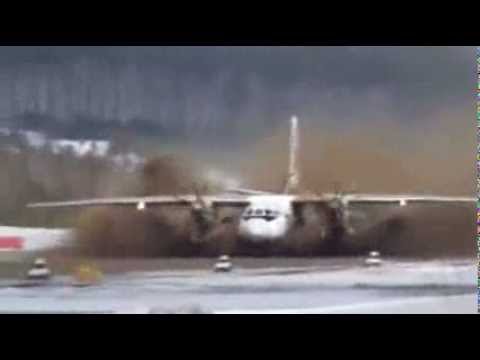One for @BeachAV8R
United 777 apparently suffered some sort of engine (uncontained failure?) - looks like the inlet lip landed on this guy’s truck!
Oh dear…
Yep, just saw it and came here to post it.
That would make a nice fire pit…
More pics and vids here:
Smooth landing. Good job.
”Whaddayamean, uncontained engine explosion? No engine parts reached orbital escape velocity!”
Sorry for the joke, but I’m seeing more engine disintegrations than I would like…
I mean, they test the damn things by putting explosives in running engines…!
I just can’t help thinking how fortunate it was to have happened where it did. Midway between the coast of California and Hawaii would have meant that thing sitting there burning for hours and hours. Unless it was just hydraulic and oil that was burning there…but still… It is a reminder that ETOPS does sometimes result in becoming a half a million pound (or more), single engine aircraft a long way from land…
Yeah, but there’s a reason why we mostly practise engine failures at take off, when the engines are at their peak of their performance for the flight. Having an in cruise failure is very rare, but it happens of course. Normally not this catastrophic though.
VAS Aviation has the track and audio: https://www.youtube.com/watch?v=G7-zh7Sebr8&feature=youtu.be
Hmm. Read this just yesterday. Once is bad luck, but twice?
Almost identical incident happened 3 years ago - the same type (B777-200), the same engine (PW4077), the same operator (United Airlines), the same side (right engine), the same failure (unconfined engine failure).
And then there’s QF32…
I have Cmdr. de Crespigny’s signed book. I met him when he came to Norway for one of his lectures. A great lecture, BTW. Wonderful Aussie humor. ![]()
Well yeah… Though what has been shattered and smashed away is mostly light non structural composite materials that cannot withstand a lot of impact. The core case and the fan containment case are all in one bit including all the strut materials.
The inlet cowl is clean and gone, which is not very good. From what I’ve seen so far is one blade seperated due to a crack at the root, and that probably went for a ride, possibly forward and taking a part of it’s neighbour with it. Though the neighbour may also have given way due to vibrations.
If you look closely you can see the brown environmental protection cover being all crumpled up. Below that is the Kevlar Containment Cover/Ring. This has done it’s job as designed and kept the blade partially contained within the engine for a duration.
Now what is slightly worrying is that fan blades have shown a habit of escaping forward and taking the engine inlet cowl with them for a short ride back to earth. Not a positive development.
It looks like there’s also a fire behind the thrust reverser blocker doors/vanes. Not sure what the cause of that is, but a fire retardant won’t do much good if most of your cowling is missing.
@BeachAV8R I doubt it’s a lot of fuel burning. The triple, like most modern aircraft have a spar valve in the upper are of the strut. This valve will obviously be closed in case of fire. It is one of the automated steps that happen when you pull out the fire lever. Not sure what exactly is burning though.
@fearlessfrog Once is happenstance, twice is a coincidence… thrice is malice? Not sure how the saying goes but it definitely could be an indicator of bigger issues.
Yeah…I’m guessing it is probably engine oil burning. I’d imagine the thing holds many, many gallons of it. When I blew the engine in the King Air (PT-6), the turbine section flung itself apart, the entire case ruptured, and the impressive flames that resulted (that burned for about 14’ out of the stacks) burned for about 30 or so seconds until it was all exhausted. I’m betting that a similar situation happened on a larger scale on that 777 engine. Residual oil burning.
I’m actually impressed that only two of the blades departed…the imbalance must have put enormous stress on the entire disc and it is amazing it didn’t do even more damage. The fact that it is rotating at all is pretty amazing.
Yeah you can see the whole engine shake in certain video’s. That’s the bearings transmitting the load into the casings and other support structures.
Any chance of hearing the story of what happened there @BeachAV8R? I’d be interested to read about it
I wouldn’t mind hearing it again, it is really good.
There were even pictures and they looked pretty rad IIRC.
Please, uncle @BeachAV8R tell the story again! ![]()
United was the launch customer for the 777. So “our” PW powered -200s are as old as they can get. We’ve now grounded them. The legacy Continental 777s are a little newer and GE90 powered. Those 777s are not grounded. The good news for me is that my fleet (the 767) will pick up some of the flying. Most of our 767s are parked. So this will accelerate their return to the line. The bad news is that our 767-300s are powered by PW4060s and are even older. But they are also smaller and endure less rotational stresses-I hope. ![]()
The difference is that the 777 automatically fed in rudder and trim. So all those guys had to do was read a checklist, share a cigarette and land. Your event was likely way more challenging.
disclaimer in case my management is reading: JK of course. Any engine that blows itself apart is as deep a challenge as any of us would ever care to experience. And it has been 23 years since I have smoked in the cockpit. (I really miss those days)


